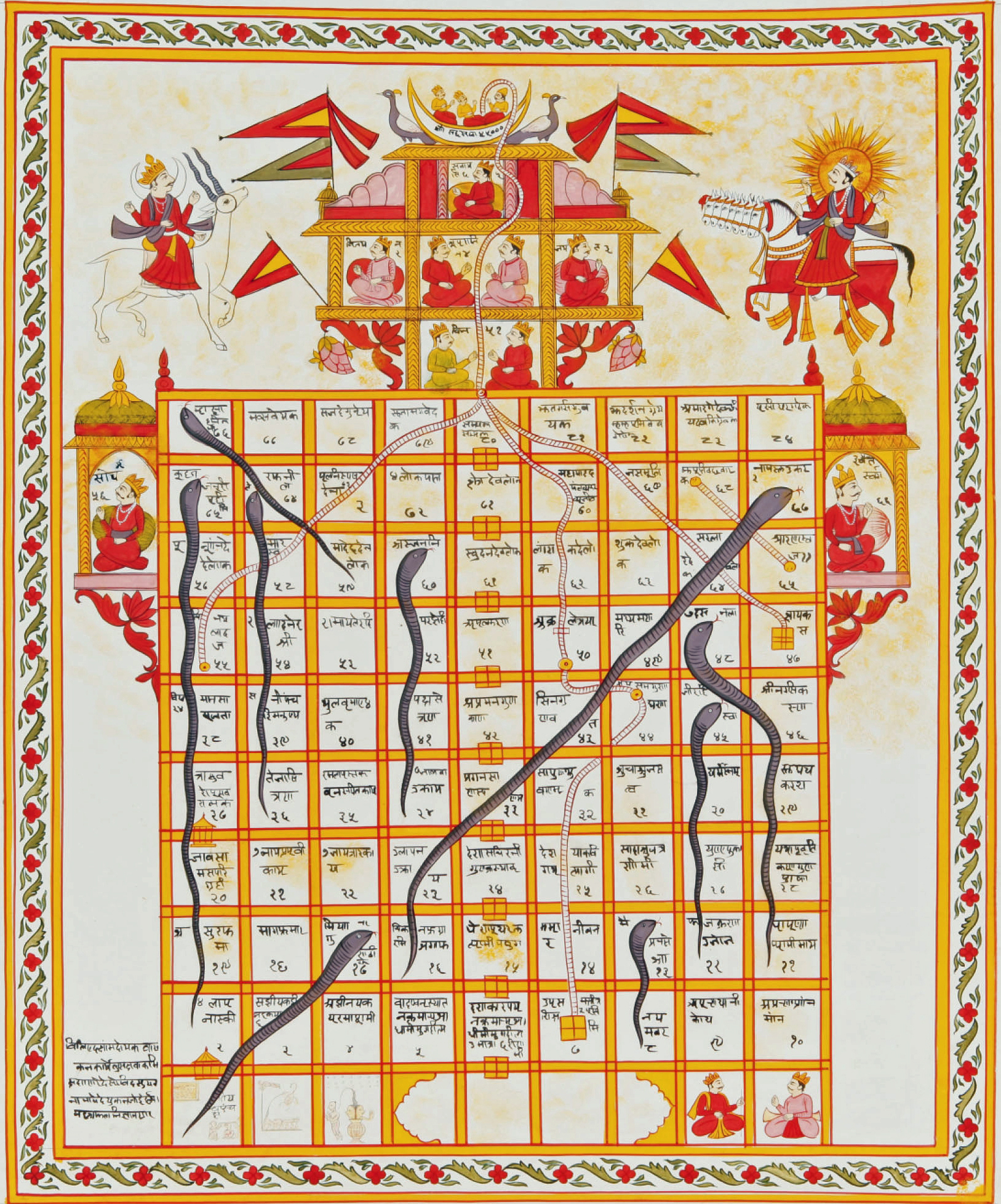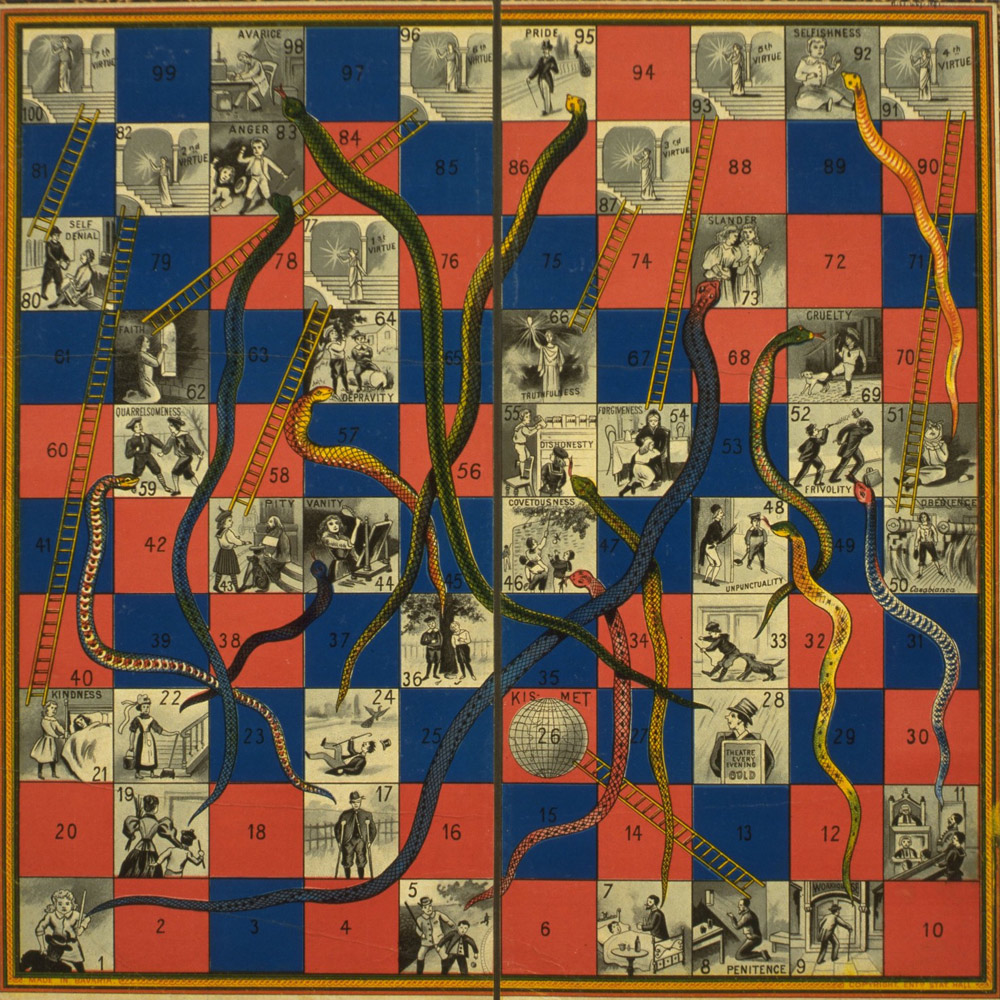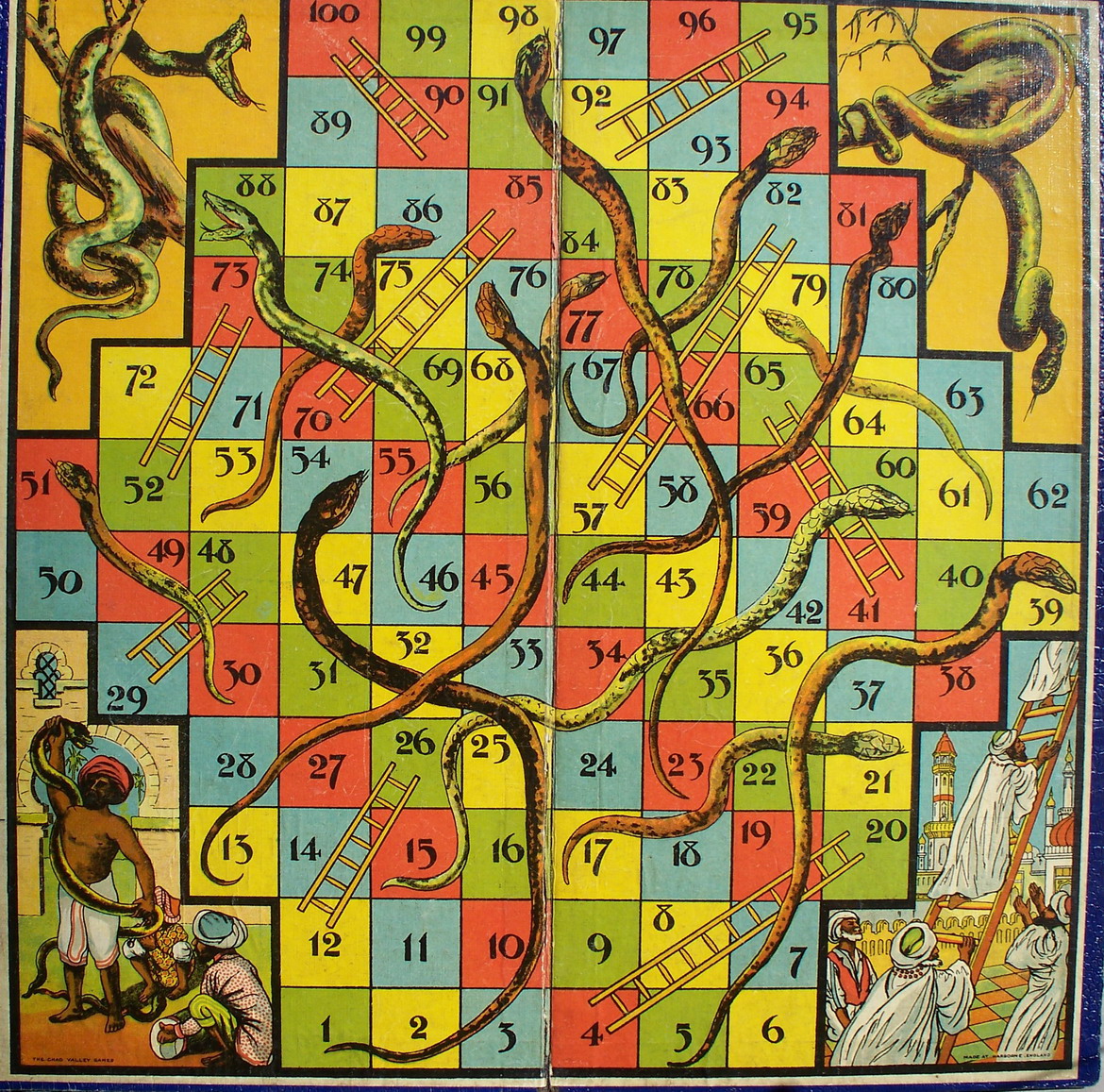The board game Snakes and Ladders originated from Vaikuntapaali or Paramapada Sopanam (the ladder to salvation), a game from India based on morality. It was often known as in Ancient India as Moksha Patamu.
In this game the ladders represented virtues such as generosity, faith, and humility while the snakes represented vices such as lust, anger, murder and theft. The moral of the game was that a person can attain salvation through performing good deeds whereas by doing evil one takes rebirth in lower forms of life. The number of ladders was less than the number of snakes as a reminder that treading the path of good is very difficult compared to committing sins. Presumably the number "100" represented Moksha (Salvation). (Snakes and Ladders, n.d.)
 |
Figure 1: Game of Snakes and Ladders, gouache on cloth (India, 19th century). Retrieved from wikipedia
|
A newer version of the game was introduced in England in 1892 and was later introduced to the United States by Milton Bradley in 1943. Since then the game has become a classic, and has experienced many redesigns.
 | |
| Figure 2: Page from a Kalpa Sutra manuscript showing the birth of Mahavira. about 1450-1500. opaque watercolour and gold paint on paper, Victoria and Albert Museum, London. Retrieved from www.vam.ac.uk. |
I like the checkerboard style and colours of this old Indian snakes and ladders board. This board also shows the vices and virtues on the squares- something that is not always seen in newer versions of the game. A more modern board, possibly from the 1970's shows a variant of this by showing actions and consequences. For example one snake square shows two boys fighting. Following the snake takes the player to a square which shows the boys injured.
 |
| Figure 3: Snakes and Ladders with consequences. (n.d.). Retrieved from http://sandradodd.com/game/snakesandladders |
Some boards use interesting shapes and layouts:
 | |
| Figure 4: Snakes and Ladders. E. Edelman. 2012. Digital collage. Retrieved from http://blog.retrocollage.com/eternal-collage-vice-virtue/ |
 |
| Figure 5: Snakes and Ladders board. 1920/30. Paper pasted on cardboard. 415x415.England-Harborne. Retrieved from http://www.giochidelloca.it/scheda_stampabile.php?id=883 |
Some other interesting boards are those that substitute the snakes and ladders for other imagery.
| Figure 6: Sledges and Toboggans. (n.d.). Retrieved from http://sandradodd.com/game/snakesandladders |
| Figure 7: Cats Version. (n.d.) Retrieved from http://sandradodd.com/game/snakesandladders |
This cat variation of the Snakes and Ladders board is interesting but isn't as clear as the original as to whether the ladder goes up or down. It becomes more necessary for the player to pay attention to what is going on in the imagery.
No comments:
Post a Comment